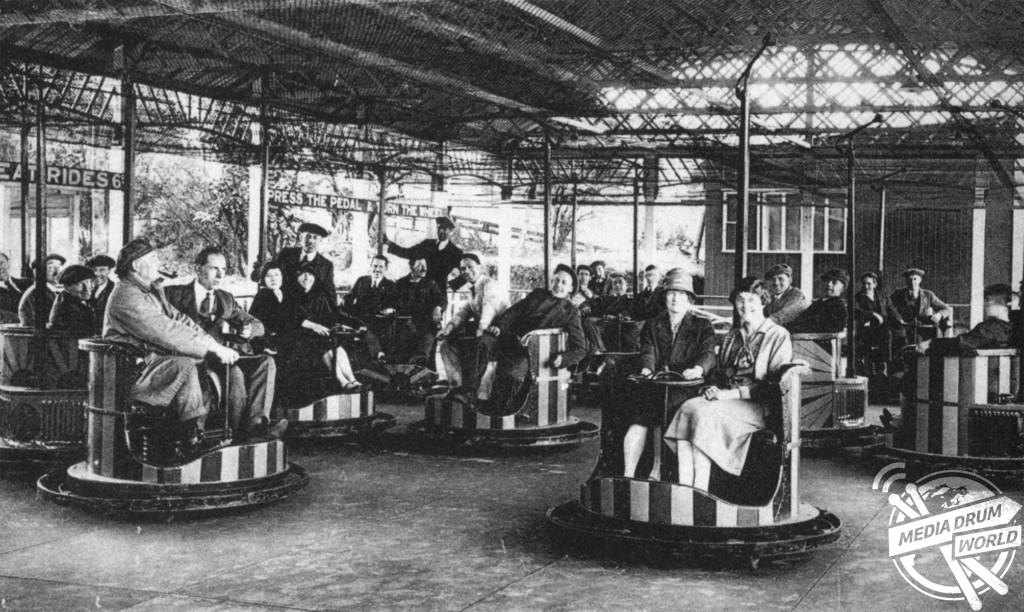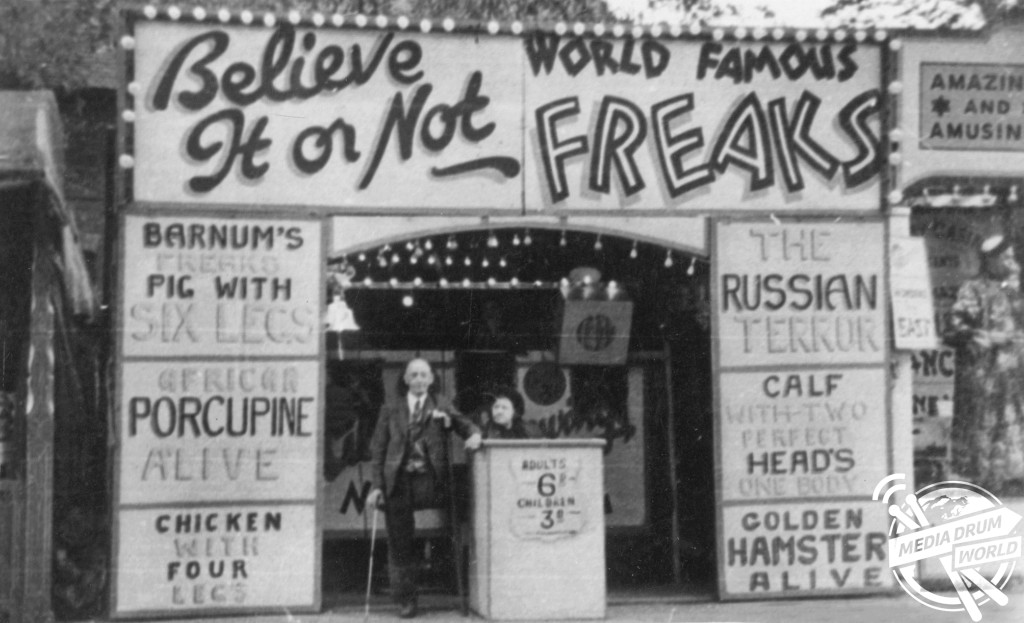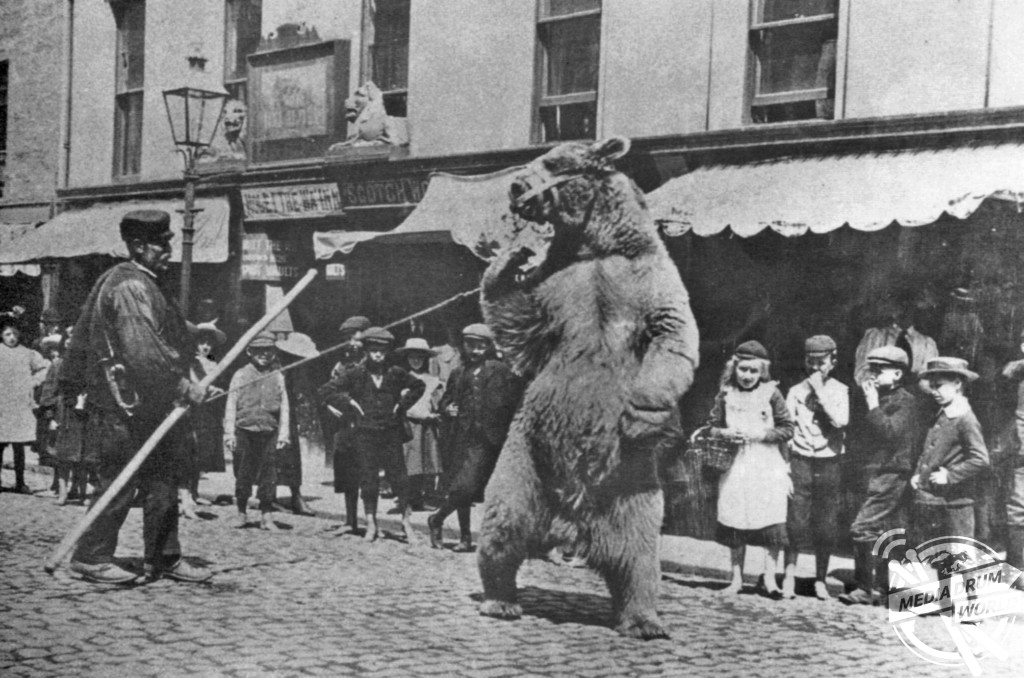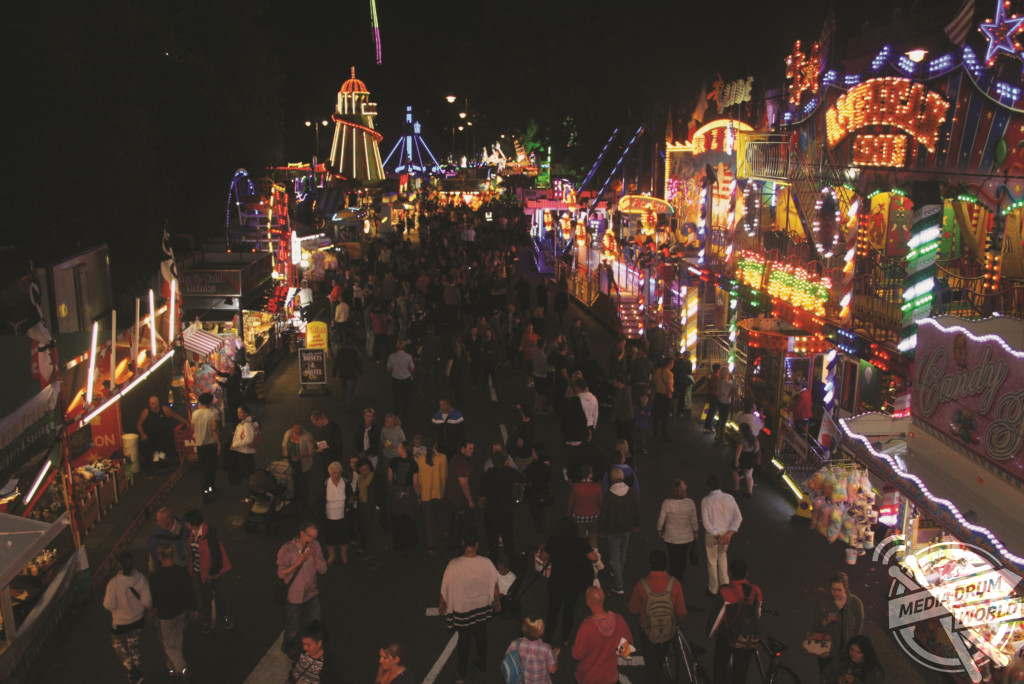
By Liana Jacob
FASCINATING VICTORIAN photographs of Britain’s most popular fairs and freak shows have been exposed in a new book that entails the historic journey of the commonly celebrated pastime.
The incredible pictures show a comparative contrast from swarming crowds in St Giles in Oxford, UK, during the annual fair during the Edwardian era and the clearly sparser crowds in the same but more modernised fair with neon signs in 2017.

Another fierce image reveals the way they would use living bears with their mouths trapped with muzzles as a source of entertainment during the Victorian period, while another picture illustrates the advertisement for an Edwardian freak show with a picture of ‘Beautiful Minnie’.
Further photos portray the way a Skymaster ride in a 1950s fair was built from aircraft drop tanks and a searchlight trailer after the Second World War, with another image revealing the way some people were learning to fly on a 1920s aeroplane ride following the First World War.
The engaging photographs are part of a book titled Frost Fairs To Funfairs by travelling showman, Allan Ford and author, Nick Corble. It has been published by Amberley Publishing.
“One of the marks of civilisation is the desire for people to come together, to gather and share and to be part of each other’s lives,” they said.

“In the past, such occasions may have been sparked by a need to worship together, or to celebrate a saint’s day, or may have been driven by wanting to share a significant moment in the agricultural or astrological calendar, such as spring fertility rites, the autumn harvest or a summer solstice.
“During these markets booths, tents and wooden stands would be erected in the forum, offering attractions and distractions beyond purely functional needs.”
In the mid-16th century, freak shows became increasingly common pastimes in England. It was a, now controversial, show dedicated to showcasing people with deformities or uncommon diseases in a bid to objectify them.

During the late 19th and early 20th centuries, freak shows became established in England and the US, where they became successful commercially run events.
“In larger fairs there would also be a few ‘headline’ attractions, which were usually shows. These shows might offer the opportunity to see something out of the ordinary, be it a ‘freak’ (real or manufactured) or simply someone from a different culture, such as the ‘Red Indian’ noted by Wordsworth at the 1815 Bartholomew Fair,” they said.
“Also popular were performing animals, which ranged from small insect or bird menageries to the elephant seen at the 1813/14 Thames Frost Fair, although this was well out of the norm. Bear-baiting and cockfighting were also regular attractions.

“A particular favourite during the early part of the nineteenth century was Toby the Sapient Pig, who was said to be able to ‘spell and read, cast accounts, play at cards, tell a person what o’clock it is to the minute and tell the age of anyone in company’, among other gifts.”
Frost Fairs To Funfairs was published on November 15, 2017, and is available here: https://www.amberley-books.com/frost-fairs-to-funfairs.html






